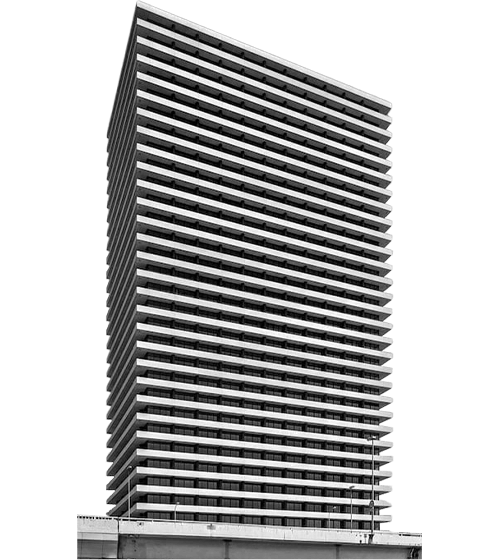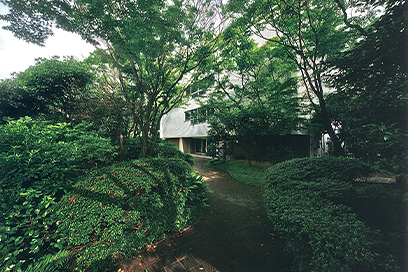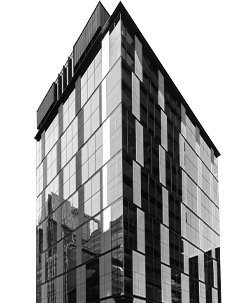 10
2015
10
2015
Osaka
The Shin-Daibiru Building
Preserving the Philosophy of the Former Shin-Daibiru Building
with a New Environmentally Harmonious Building
The Challenges of the Rooftop Garden Transplant Plan
The biggest challenge in the rebuilding plan for the Shin-Daibiru Building was the plan to transplant the rooftop garden in accordance with the philosophy of “inherited value.” At the time of its completion, the rooftop garden contained 3,759 evergreen trees, 522 deciduous trees, and 1,110 flowering plants, with 100 species of plants, as well as feeders and water troughs to attract wild birds and provide resting places for migratory birds, according to contemporary documents. Half a century later, the trees had grown so thickly they resembled a forest, and it was hard to believe that it was the roof of an office building. The idea was to transplant as many trees as possible to the ground. This was the first time in the history of rooftop gardening that trees over 50 years old would be transplanted, and it was truly an unprecedented challenge.
Would transplanting the trees really be possible? If indeed possible, how should it be done and which trees should be transplanted? Daibiru conducted surveys and investigations into the matter and finally selected a total of 25 trees as transplant candidates, including camellia, camphor, wax myrtle, and Japanese cleyera. Spares were also included. The trees could not simply be transplanted as is. First, we implemented preparatory measures of 8 to 11 months based on a transplantation method devised by a national research institute. Next, 22 healthy trees were selected, and root trimming, root ball wrapping, and the transplantation process (excavating the dirt around the trees, tying up the root ball, lowering the tree from the roof to the ground, and then transporting it) were carried out. Because there was a time gap between the demolition of the former Shin-Daibiru Building and the completion of the new Shin-Daibiru Building, the trees had to be allowed to recover in a temporary planting site. At the temporary planting site, compost was spread around the root clumps to promote rooting into a foundation that took drainage conditions into consideration, and the trees were given about four years to recuperate. After the new Shin-Daibiru Building was completed and Dojima-no-mori, a garden approximately 3,300 m2 in size on the premises, was ready, the trees were transplanted into their new location.
Daibiru also made some discoveries during the survey conducted for transplanting the trees. Despite the fact that the soil of the former Shin-Daibiru Building’s rooftop garden was thin—just 36 cm on average—and the soil was silty, sandy loam with low water retention, many of the tall trees grew healthily with more-or-less their natural shape. They had grown up to 12 m tall, which shows how suitable an environment the rooftop garden was for plants, but more important, according to experts, was the dedicated and scrupulous care given to the plants. This natural environment had been preserved because of Daibiru’s attitude of living in harmony with nature over the previous half-century.
-
1927 1931 Hibiya Daibiru Buildings
No. 1 and No. 2 -
2007 International Operations
-
- An Unexpected Discovery of a Good Property
- Mutual Trust and a Long-Term Perspective as Points of Agreement
- The Acquisition of a Property in Hanoi Through Unity of Philosophy
- Implementing Daibiru Quality Through Building Renovations
- Challenges in Australia, Our Second Overseas Expansion Target
- The Discovery of 275 George Street
- Difficult Contract Negotiations with JHG
- Overcoming Several Unexpected Difficulties
-




